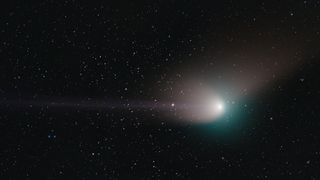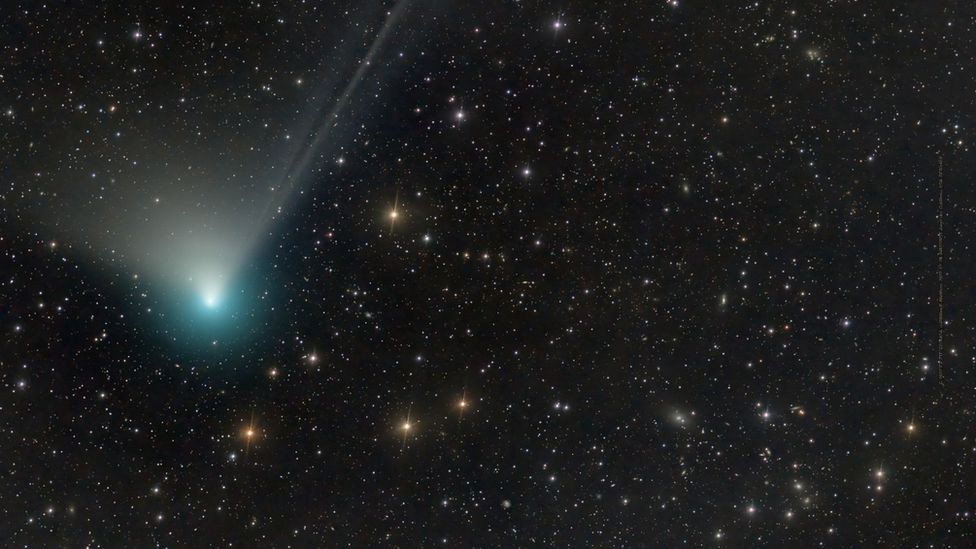Rare Celestial Sightings : Green Comet, February 10
"Comets are notoriously unpredictable, but if this one continues its current trend in brightness, it'll be easy to spot."" It's just possible it could become visible to the unaided eye under dark skies."NASA Blog"I'm telling you - binoculars, dark site - you'll see something. Bring friends and you all will see something of a lifetime.""Whenever you have a lake system around you, or ocean system, it causes a smoother airflow. Smoother airflow means the stars don't twinkle as much so you get more details."Astrophotographer Dan Bartlett, Yosemite National Park, California
 |
As objects in the night sky this one is remarkable for several reasons, its green colouring and its age. Come to think of it, its name is also fairly remarkable: Comet C/2023 E3(ZTF). It's on a visit to Earth on its way elsewhere within the endless space of the universe. And while it's whizzing by, some fortunate people will be able to sight it. It's thrilling, like seeing shooting stars, or satellites, bright specks in the velvet deep-dark-blue of the nighttime sky, illuminated here and there by constellations and numberless stars.
It's been around here before, but not since the last 50,000 years when our distant relatives roamed Earth. Astronomers casually call comet "dirty snowballs" for their constituents; ice, dust and rocks. They emerge from icy matter called the Oort cloud at the outer edge of our solar system. Comprised of a solid rock core, covered with ice and dust, a thin, gassy atmosphere of more ice and dust called a coma travels with comets, their tails. Which melt in their approach to the sun, releasing a gas stream and dust blown off the comet's surface by solar radiation and plasma, which forms a cloudy, outward-facing tail.
Gravitational forces capture the comets from where they park themselves at the inner solar system, moving them from the Oort cloud. They become more visible moving closer to heat exhaled by the sun. Observatories around the world discover up to a dozen comets annually. Back when Neanderthals called Eurasia their home and homo sapiens was streaming out of Africa, when Ice Age creatures such as mammoths and sabre-tooth tigers called the landscape home, someone may have noticed the comet passing by.
Astrophysicists studying comets' formation and longevity can detect clues of the primordial solar system before its formation during its earliest stages of explosive turbulence and massive dispersal. Astronomers making use of the Zwicky Transient Facility telescope at Caltech's Palomar Observatory in San Diego discovered the comet on March 2nd 2022. The comet's chemical composition expresses itself in its unique emerald colouring; the result of interaction between sunlight and carbon-based molecules in the coma of the comet.
"We're going to be looking for the fingerprints of given molecules that we can't access from the ground.""Because JWST's so sensitive, we're expecting new discoveries"Planetary scientist Stefanie Milam, NASA Goddard Space Flight Center, Maryland
 |
| Retired science teacher, Dan Bartlett, captured this image from his cabin near Yosemite National Park in California |
Labels: Astronomy, Comets, Green Comet, Just Visiting, Oort Cloud, Solar System

0 Comments:
Post a Comment
<< Home